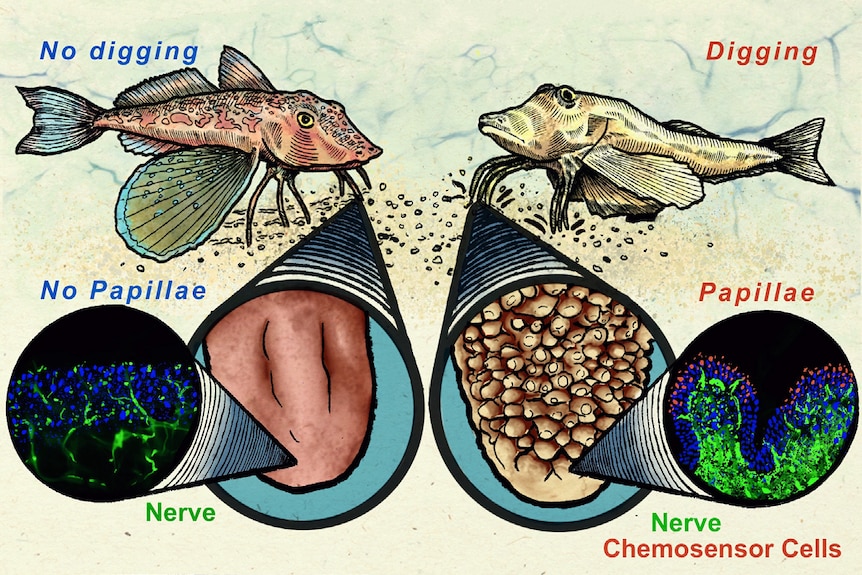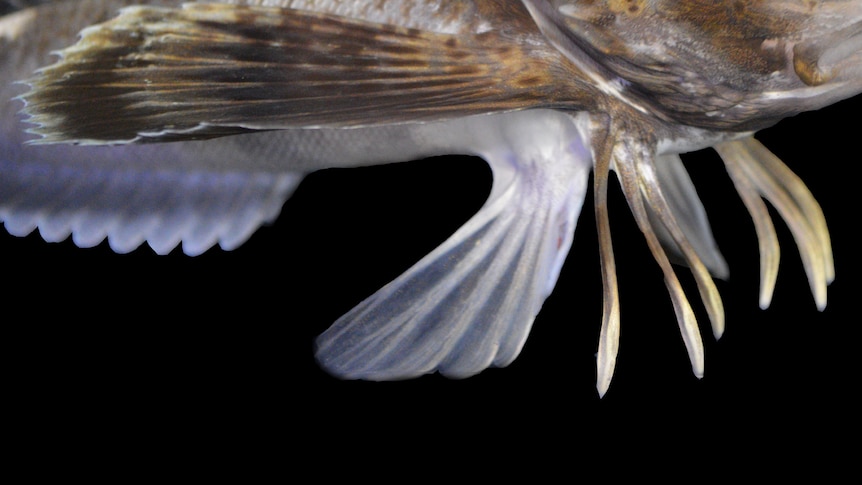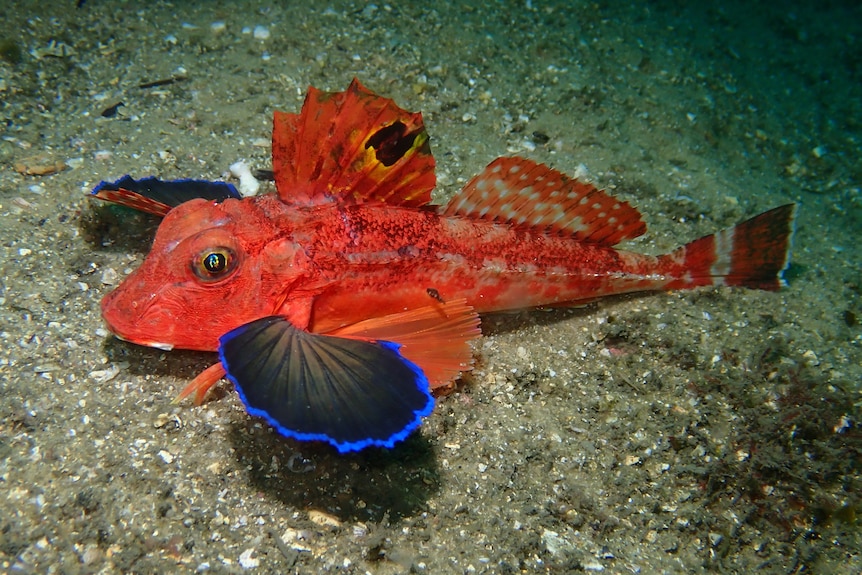Imagine walking in the shallows of the beach and tasting the clams and oysters hidden under the sand with your feet.
That’s exactly how two species of North American fish evolved with wing-like fins, crab-like legs and screeching sounds to catch prey.
A pair of studies published today in Current Biology shows that the genes that help humans develop legs and tongues are also found in a fish called a sea leopard.Prionotus scitulus) and northern sea robins (Prionotus carolinus).
Loading
One study looked at how a single gene — which plays an important role in limb development for several vertebrates, including humans, chickens, mice and other fish — divides part of its largest fin into six “legs” for several species of sea robins.
And the second study went a step further, showing that the legs of the leopard and northern sea robin have tiny papillae, like the tiny bumps found on your tongue, that contain taste buds that act as sensory organs for finding buried food.
These fish use their legs to dig for prey while other species only use their limbs to walk on the seabed.

The behavior and physiology of sea robins with leg-like appendages differs from that of some burrowing species that are developing sensory papillae. (Credit: Anik Grearson/Bellono Lab)
Further research has the potential to provide insight into human developmental conditions as well as general evolution within the sea robin family.
There are more than 100 species of manatees, also known as gurnards, found around the world.
They have evolved an amazing array of traits, from armor and venom to striking skin patterns and the ability to call or squeak.
A case of curiosity
The two studies were conducted when researchers from Stanford and Harvard universities independently encountered the strange fish in Woods Hole, northeast of New York City, at a local aquarium or marine biological laboratory in the city.
David Kingsley, a developmental biologist at Stanford University and one of the authors of the study, said: “The fish tank on display was the most interesting and strange fish I have ever seen.”
“They had the body of a fish, the wings of a bird, the legs of a crab. The fish actually walk on the bottom of the tank.”
When one of the study’s authors, Nicholas Bellono, a cell biologist at Harvard University, first saw a sea robin, it was like someone putting together “an animal made up of a bunch of other animals.”
“It’s a really great model of evolution,” he said.
“It’s a fish with legs.”

The fish-leg-like features are actually part of the pectoral fin of the northern manatee. (Credit: Anik Grearson/Bellono Lab)
The two groups, led by Amy Herbert at Stanford and Corey Allard at Harvard, eventually joined forces to study the evolutionary characteristics of fish.
The researchers found that a gene called tbx3a is activated during the development stage of fish legs.
Using the CRISPR gene editing tool, the team made changes to the tbx3a gene in sea robin embryos and recorded their development.

The tbx3a gene is important in early organ development for humans and other species. (Credit: Anik Grearson/Bellono Lab)
Some genetically modified fish developed smaller legs with fewer bones.
And in some cases, fish more or less grew legs.
If the team were able to breed the genetically modified fish together, they could study the effects of inheriting one or two edited versions of the tbx3a gene on the development of their offspring, Professor Kingsley said.
He added that discovering how the tbx3a gene works in fish could help research into human conditions such as ulnar-breast syndrome, a rare inherited disorder that affects organ development, among other things.
But the function of the tbx3a gene was not the only mystery of the discovery of curious legs that the researchers discovered while studying the sea robin.
Is it the same fish?
While observing the northern sea fish in the tanks, the researchers noticed that each fish washed the sand tank with its feet.
When the researchers hid small traces of bait in the sand, the fish found them.
Professor Bello said they weren’t really sure how the fish managed it.
“[Then] We accidentally brought home different species of sea robins [the striped sea robin]” he said.
And this sea robin couldn’t find the buried prey.
Loading
This striped sea robin would eat clams or other snacks placed right in front of it, but would not find food in the sand.
That’s when they compared the legs of the two species, Professor Bello said.
“It was very obvious that the burrowing sea robin’s legs were specialized in many ways,” he said.
They were almost like shovels… and at the end of those shovels were these little bumps called papillae, which are a lot like our taste buds on our tongue.
“And they were full of touch sensors.”
The finding is just one of many insights into small-scale evolution that have already piqued the interest of other universities eager to look at sea robins.

The spiny gournard is found from K’gari in Queensland around the southern coast of Australia to Lancelin in Western Australia. (iNaturalist: John Sear, Spiny gurnard, CC BY-NC 4.0)
Professor Kingsley said there were also species that could be studied in Australia.
“You have a fascinating species along the southern coast of Australia, these spiny gorse [Lepidotrigla papilio] And they have legs … but they have these wonderful color patterns.”
“I think it’s a really interesting example of pigmentation and innovation traits that have evolved back into that sea robin, as opposed to the sea robins that are found on the Atlantic coast around Massachusetts, where we started.”
#Manatees #body #fish #wings #bird #legs #crab #taste #feet